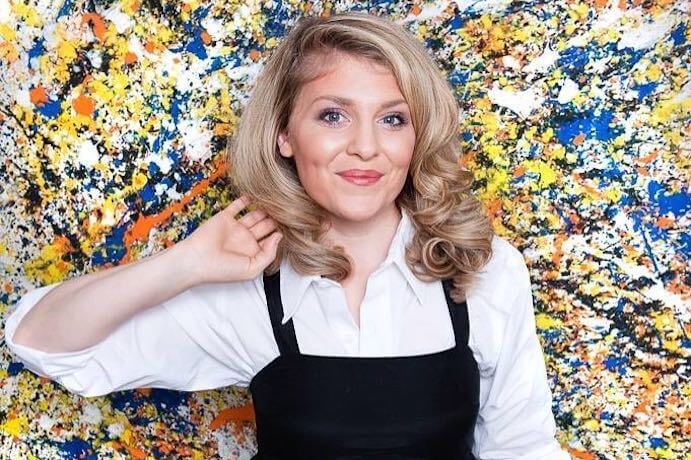Invariably as I travel around the country for different festivals and series, I hear fellow practitioners say to each other, “Oh, do you know Omaha Under the Radar? You should really talk to Amanda DeBoer Bartlett. She definitely knows what she’s doing there.” Going into their fifth annual season (July 25-28, 2018), Omaha Under the Radar (OUtR) is a ground-breaking experimental performance festival in the Midwest. The festival’s organizers, Amanda DeBoer Bartlett, Stacey Barelos, and Aubrey Byerly, are powerhouses who genuinely do know what they’re doing there. They have worked tirelessly to present over 200 artists from more than a dozen cities throughout the United States since 2014. Their commitment to presenting a multiplicity of genres in radically different types of venues makes this one of the most unique and invigorating festivals in the country. And, it all takes place in Omaha, Nebraska.
When did you know that you wanted to build a festival dedicated to experimental performance in Omaha?
I grew up in the suburbs of Omaha, then left immediately after graduating high school. When I moved back to Omaha after finishing grad school in 2012, I was on the road constantly, so I never became familiar with the city as a working artist. I was missing a sense of community, and I think I was also looking for a way to connect with Omaha as an adult. Making a big hoopla festival gave me the chance to immerse in the scene and helped me start feeling at home in my hometown.
Amanda DeBoer introduces a string quartet performing new music by Stacey Barelos at Joslyn Art Museum during Omaha Under the Radar 2016–Photo by Aleksandr Karjaka
You first began with the festival in 2014. Since that time, you’ve added SOUNDRY (an experimental music workshop) and the Generator Series to your offerings. How did you know that it was time to add those programs and how did you go about creating them?
To be clear, I never know when it’s the right time to do anything. I do first, think later. That said…
SOUNDRY was Stacey Barelo’s idea. Our first year, we hosted artist talks, which was interesting, but too academic for our taste. So, in year two, Stacey took the reigns on education and collaborated with KANEKO to create SOUNDRY. She’s such a brave and curious musician, and I love the way she structures the workshop. If I wasn’t busy working the festival, I would be a student at SOUNDRY.
The Generator Series was also a KANEKO collaboration. We wanted to expand our programming throughout the season, rather than focusing it all during one week per year, and around the same time, KANEKO reached out to us to see if we’d be interested in producing events for them. Having the support of KANEKO and building that relationship has taken our organization to the next level. They challenge us to go further with our concepts and break the concert mold. They have also helped us connect with new audiences through their membership, which has been extremely helpful. We love them so much!
Omaha Under the Radar is clearly a relationship between new music and residents of Omaha. How have you built those community bridges?
One person at a time, which we can do slowly since we live here.
When I was presenting a festival in Madison, it became a totally one-sided relationship. I was asking so much of the venues, the locals, the artists, because I wasn’t there to lay the ground-work before everyone else rolled in to town. And, since I didn’t really get what the city was about, I had no idea how to meaningfully give back to the community.
Growing the audience in Omaha has been pretty organic by comparison. When I’m not on tour, I’m here, talking about what we’re doing, meeting with people, putting up posters, and wearing our shirts. I’m seriously obnoxious about it.
The venues and local artists we present are also essential. They bring together their people and encourage them to check out our events. I’m grateful that we’ve reached outside the art scene a bit because of that. We can always do better, but we’re in it for the long haul, so we have time to keep figuring it out.
To me, this is the role of presenters in the 21st century–to rebuild the audience infrastructure for live performance on a local level, one person at a time, in unique ways that feel welcoming and exciting. Tilling our own soil, so to speak.
Dancers perform a new work with music and choreography by Vivian Kim at Joslyn Art Museum during Omaha Under the Radar 2016–Photo by Alexsandr Karjaka
Each festival is such an incredible undertaking. What keeps you continuously committed to presenting year after year?
I honestly don’t know. Certainly not the pay :) Every year, about one month before the festival, I question my life choices. But then, the day after the festival, every year, I’m already planning the next event. It’s such a thrill watching everyone come together and seeing the performances. I can’t get enough.
If you could go back in time to tell yourself a key bit of advice before you started, what would you say?
Stay on top of your mental health throughout the planning process so that you don’t have a meltdown at the events.
3:00AM emails don’t accomplish anything. Go to bed.

